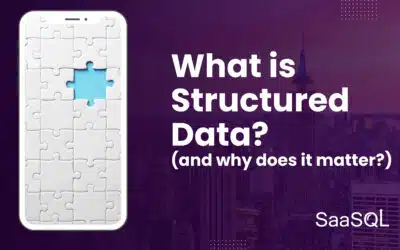Why the Ideal Customer Profile Is More Important Than Ever
And what it takes to define it accurately in a privacy-first, post-cookie era
In January 2020, Google triggered a seismic shift in the marketing world by announcing plans to phase out third-party cookies. Browsers like Firefox and Safari quickly followed, driven by rising concerns around data privacy, transparency, and the ethics of behavioral tracking. The changes left marketers scrambling—not just for new tools, but for a more foundational understanding of their audience.

Technologies like Data Clean Rooms emerged to fill the gap. But they brought with them a new challenge: personalization and attribution now required more sophistication, not less. In the absence of easily trackable third-party data, first-party data became the new gold standard, and with it, the ability to deeply understand—and precisely define—your Ideal Customer Profile (ICP) took center stage.
Why Everything Starts with the ICP
For years, marketers have relied on targeting strategies that begin with demographic assumptions or high-level intent signals. But in today’s landscape, those approaches fall short. Performance depends on data integrity, buyer clarity, and market precision. And all of it begins with how well the ideal Customer Profile is defined.
Marketers who fail to establish a well-researched ICP often fall into the trap of broad messaging, wasted spend, and sales cycles that stretch endlessly. The Ideal Customer Profile, when defined correctly acts as the filter through which every strategic decision flows—from channel selection to creative development, from audience segmentation to pricing and packaging.
According to a 2023 Forrester study, companies with a clearly defined ICP are 68% more likely to exceed lead and revenue goals compared to those with vague or generalized targeting criteria.
Why “Getting It Right” Is So Hard
The problem isn’t recognizing the value of the Ideal Customer Profile. It’s defining it correctly. Most businesses rely too heavily on CRM data or existing customer lists without interrogating those lists for accuracy or potential bias. Others build ICPs based on aspiration—who they want their customer to be—rather than actual, proven signals.
SaaSQL’s approach addresses this head-on. By integrating zero-party data (what customers willingly share), first-party behavioral signals, and augmentation from verified third-party sources, the ICP becomes not just descriptive, but predictive. Our models consider over 50 external data points and use Deep A.I. to match buyer intent with campaign-level performance outcomes.
The Data That Powers a High-Impact ICP

While every ICP is different, there are key signals that consistently correlate with high-value outcomes. Here are ten powerful data points that represent a foundational starting point:
1. Demographics
Still foundational: age, gender, income, education, and geography help define audience patterns.
2. Behavioral
Website activity, purchasing history, and media engagement—critical for aligning offers with action.
3. Psychographics
Interests, values, motivations, and lifestyle cues shape messaging and channel selection.
4. Technographics
Device usage, software adoption, and channel preferences determine how and where to reach people.
5. Firmographics (for B2B)
Industry, company size, revenue, employee count, and organizational structure all play a part.
6. Social Signals
Engagement patterns, influencers followed, and comment behavior often reveal unspoken intent.
7. Transactional
Lifetime value, average order size, churn rate—these are financial indicators of ICP quality.
8. Engagement
Open rates, CTRs, time-on-site—these signals show how prospects respond to content.
9. Intent
Behavioral combinations indicating buying stage—particularly valuable for cross-channel optimization.
10. Occupation
Especially relevant in B2C with work-related affinities (e.g., medical, education, trades, tech).
Where Most ICP Frameworks Go Wrong
One of the biggest mistakes companies make is defining their ICP around a single dimension—usually demographics or job title. But the most successful brands combine identity + behavior + context. That’s why tools like SaaSQL’s Cross Channel Marketing platform include predictive modeling and real-time A.I. updates to reflect shifts in audience behavior. To learn more about how this type of strategy can maximize returns for local businesses, read our comprehensive overview: Cross Channel Marketing: Revolutionizing Marketing Budget Allocation
Another frequent issue is skipping manual verification. While automation speeds up audience segmentation, manually verifying line-item data against campaign performance remains a necessary step for ensuring data health and avoiding misalignment.
The Cost of Getting It Wrong
Here’s the real risk: if your ICP is wrong, your targeting is wrong. If your targeting is wrong, your media is wasted. If your media is wasted, your sales funnel collapses before it even begins.
Marketing success in a zero-cookie world requires smarter segmentation and better alignment between sales and marketing. A misaligned ICP drives up your customer acquisition cost (CAC), leads to generic creative that underperforms, and fills your pipeline with the wrong prospects.
Turning Insight Into Execution
Once your Ideal Customer Profile is built with integrity, the campaign possibilities expand. You can prioritize your Total Addressable Market (TAM) based on highest-value buyers. You can deploy intent-based personalization across programmatic, email, search, and OTT. And most importantly, you can move budget into what works, and away from what doesn’t.
As we like to say at SaaSQL: everything starts with the Ideal Customer Profile. Not because it’s trendy, but because it’s the only way to avoid the single biggest marketing mistake—building a campaign around the wrong customer.
Additional Resources
For those looking to go deeper on the importance of first-party data, audience segmentation, and Ideal Customer Profiles:
- “Understanding Your Customers: The Science of Segmentation” – Harvard Business Review
https://hbr.org/2020/06/understanding-your-customers-the-science-of-segmentation
A foundational resource explaining the why and how of customer segmentation strategies, including behavioral and psychographic insights. - “The End of Third-Party Cookies: What Marketers Need to Know” – Pew Research Center
https://www.pewresearch.org/internet/2021/04/12/the-end-of-third-party-cookies
A comprehensive breakdown of privacy trends, browser changes, and the implications for marketing data strategies. - “How Data Clean Rooms Work in a Post-Cookie World” – MIT Technology Review
https://www.technologyreview.com/2022/03/10/1047136/data-clean-rooms-and-privacy
This piece explores the evolution of data clean rooms as a secure mechanism for audience analysis and personalization.







